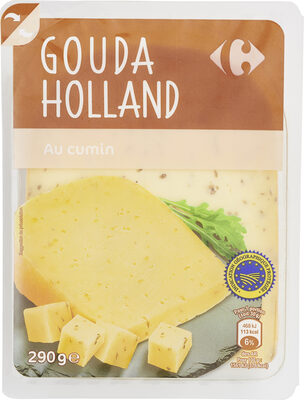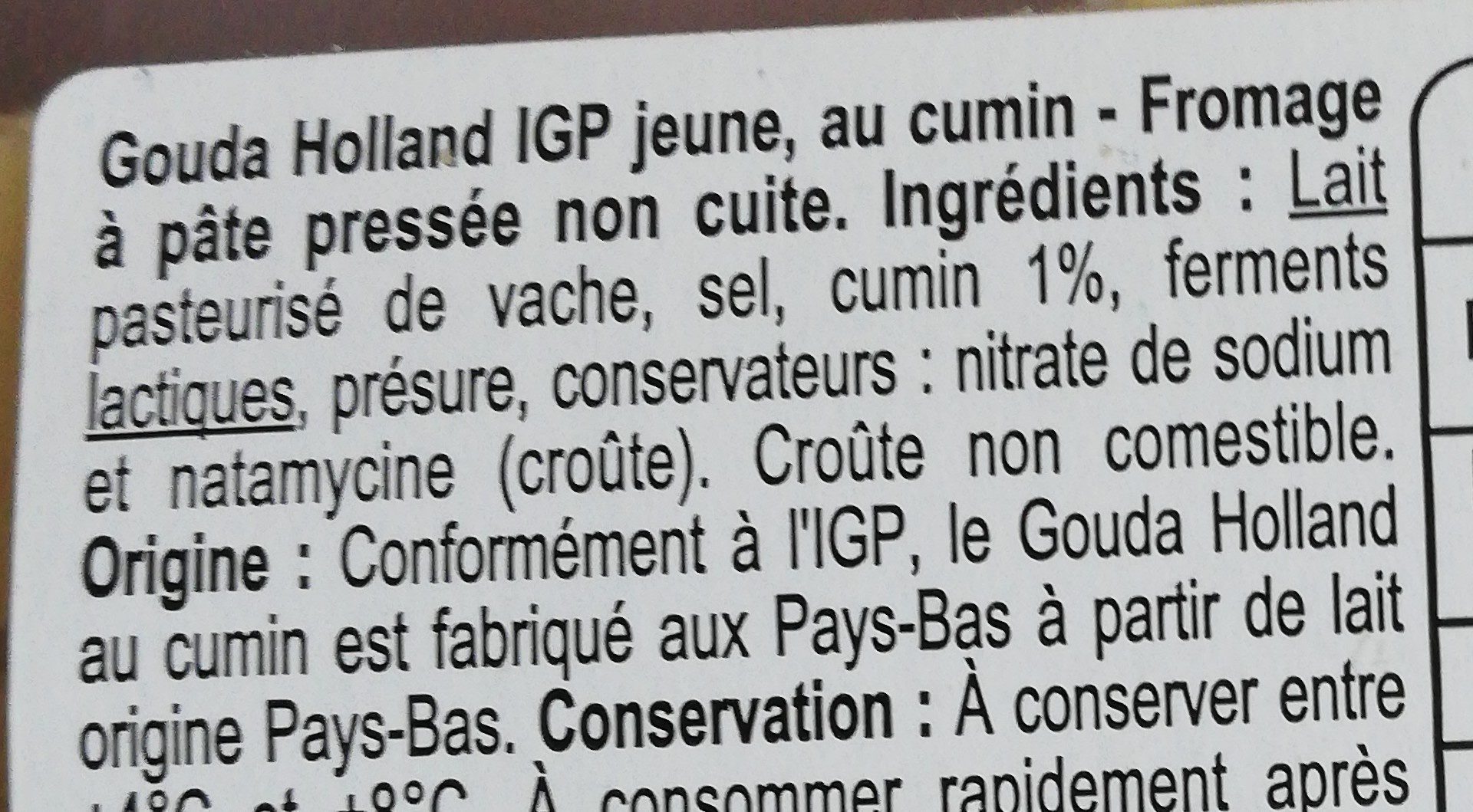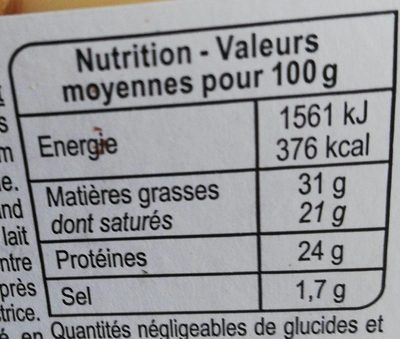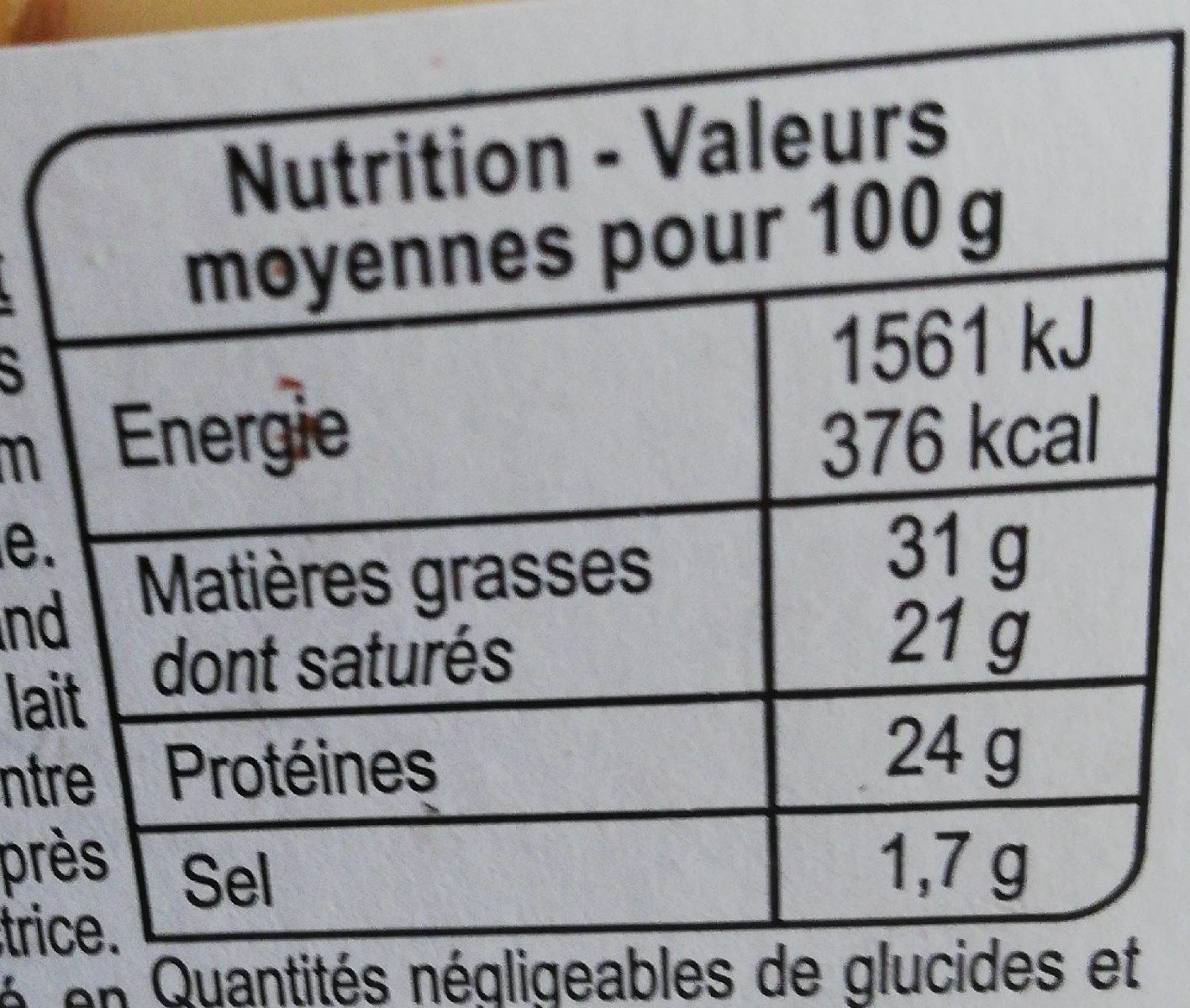Gouda Holland - Carrefour - 290 g
This product page is not complete. You can help to complete it by editing it and adding more data from the photos we have, or by taking more photos using the app for Android or iPhone/iPad. Thank you!
×
Some of the data for this product has been provided directly by the manufacturer Carrefour.
Barcode: 3560070799480 (EAN / EAN-13)
Common name: Gouda Holland IGP jeune, au cumin - Fromage à pâte pressée non cuite.
Quantity: 290 g
Packaging: Fresh, Protective gas, fr:Barquette en plastique, fr:Opercule en plastique, fr:Point vert
Brands: Carrefour
Categories: Dairies, Fermented foods, Fermented milk products, Cheeses, Cow cheeses, Uncooked pressed cheeses, Cheeses of the Netherlands, Gouda, Pasteurized cheeses, Gouda Holland, Goudas with cumin
Labels, certifications, awards:
Green Dot, PGI

Origin of the product and/or its ingredients: Conformément à l'IGP, le Gouda Holland au cumin est fabriqué aux Pays-Bas à partir de lait origine Pays-Bas.
Producer: Fabriqué puis conditionné aux Pays-Bas par FrieslandCampina Cheese, Handelstraat 11, 4143 HT Leerdam, Pays-Bas pour Interdis.
Manufacturing or processing places: Pays-Bas
Traceability code: EMB 13105F - Sénas (Bouches-du-Rhône, France), FR 13.105.001 CE - Sénas (Bouches-du-Rhône, France), NL Z 0356 EG
Stores: Dia, Carrefour, carrefour.fr
Matching with your preferences
Environment
Carbon footprint
Packaging
Transportation
Other information
Other information: 290g e logo IGP Au cumin
Conservation conditions: À conserver entre +4°C et +8°C. À consommer rapidement après ouverture. Conditionné sous atmosphère protectrice.
Customer service: Interdis - TSA 91431 - 91343 MASSY Cedex - France
Report a problem
Data sources
Product added on by aleene
Last edit of product page on by naruyoko.
Product page also edited by carrefour, driveoff, ecoscore-impact-estimator, kiliweb, openfoodfacts-contributors, org-carrefour, packbot, scanbot, tacite, yuka.Yi9BQ01Qc2NuNk11dGM4QytTSDUxZXBjM3BxeEJGcXREZnM2SUE9PQ.










